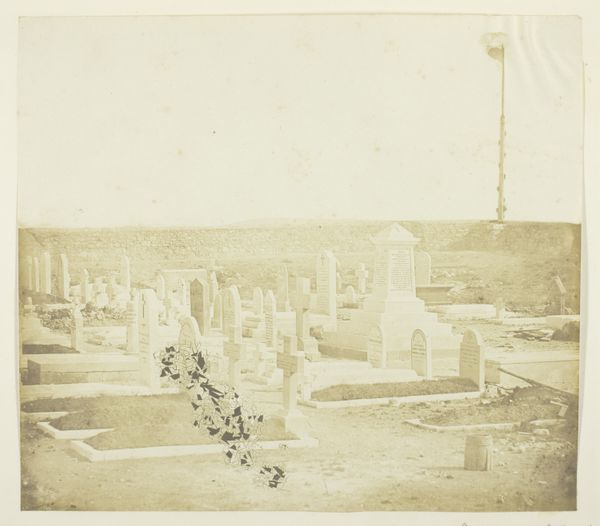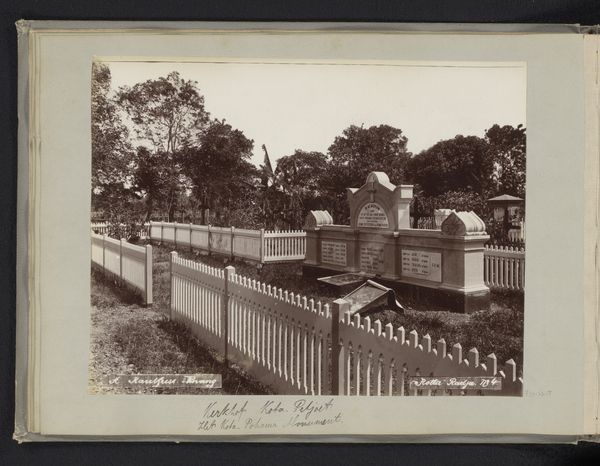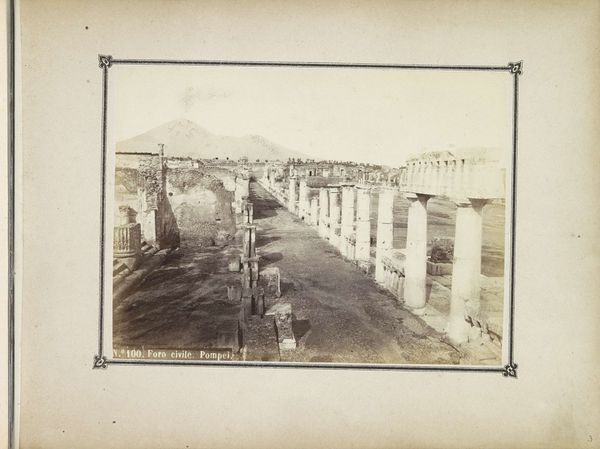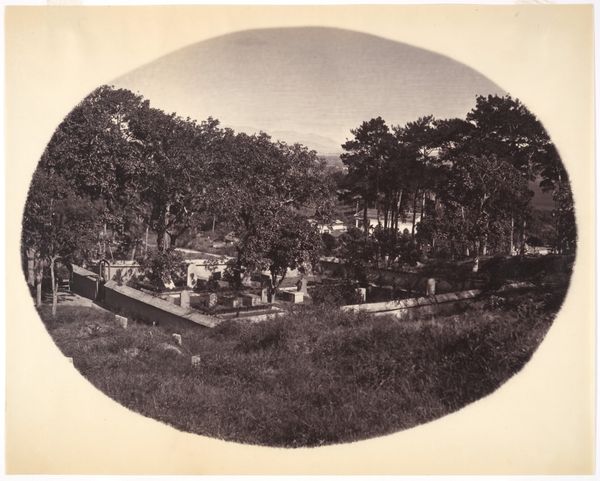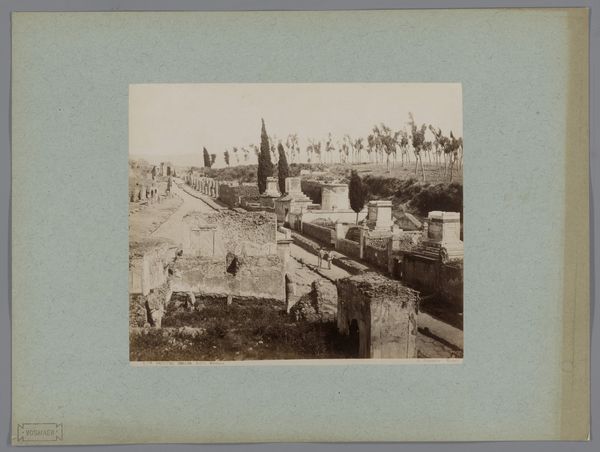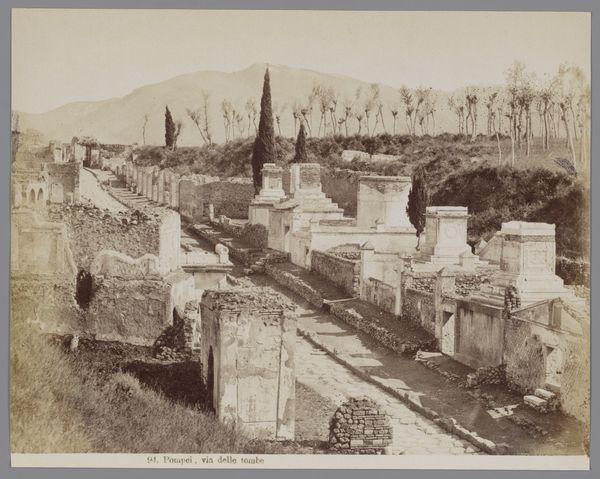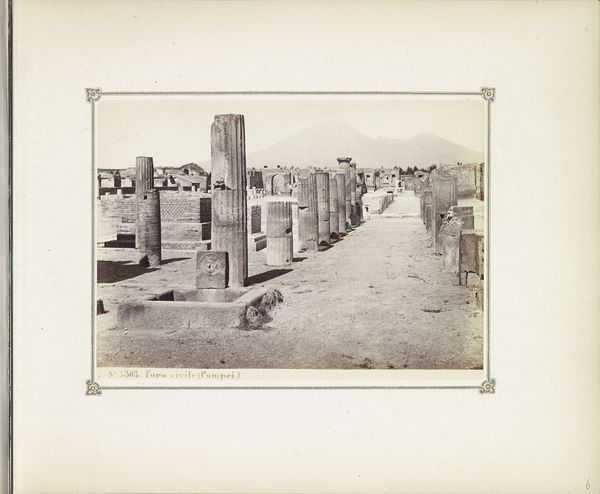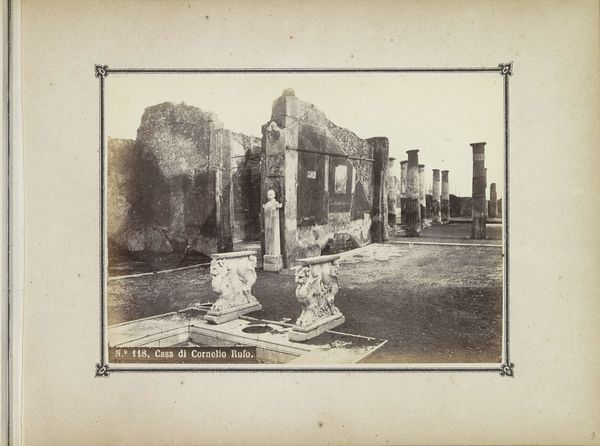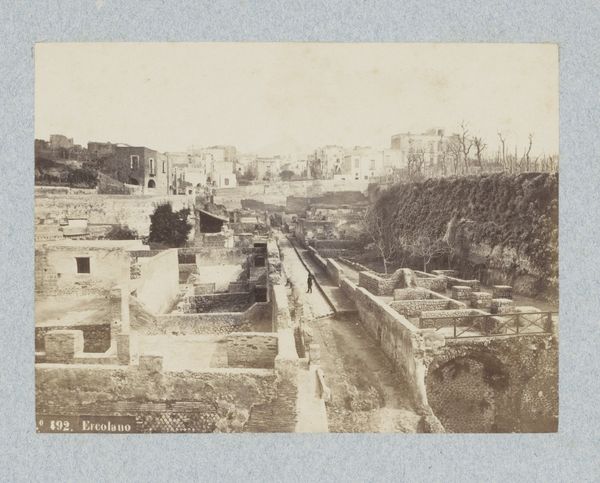
photography
#
landscape
#
photography
#
street
#
realism
Dimensions: height 104 mm, width 143 mm
Copyright: Rijks Museum: Open Domain
Curator: What a compelling image. This is a photograph by Roberto Rive, taken sometime between 1860 and 1900. It’s entitled “Straat met restanten van graftombes in Pompeï,” or “Street with remains of tombs in Pompeii." Editor: It evokes such a strong sense of melancholy. The gray tones emphasize the somber mood of the ancient tombs lining the worn street. You can almost feel the weight of history. Curator: Absolutely. And Rive captured this with what seems to be a clear objective—documenting the state of Pompeii's ruins, showing us not just grand structures, but this common thoroughfare that once existed, placing these tombs in their material context. Think about the photographic process then: it demanded deliberate execution. Each image painstakingly made, glass plate negatives and darkroom techniques involved… It connects us to the very hands and craft of making visible. Editor: Indeed. This piece raises questions about the act of documenting decay. How did images like this impact the public's perception and consumption of history, or shape preservation efforts? The act of photographing Pompeii contributes to its evolving story, becoming part of the institutional memory surrounding this historical site. Curator: I agree. Think about the consumption too - these photographic records democratized access to the wonders of antiquity for a broader audience who might never visit in person, fostering education but commodifying it. Editor: And where did this "street of tombs" lead? Who lived around it? Did the museum visitor consider the lives in the periphery of it while looking at this work of art? We should think about that as a society as well. Curator: It brings us back to the material conditions of Pompeii - what objects and narratives survived versus which were lost. It's not a glorious painting - it feels more honest and visceral. Editor: It is more accessible because the document itself feels closer to lived lives than other artistic mediums, and so, I believe it makes history palpable. Curator: Exactly. Thinking about Rive's work in this context gives us a deeper understanding not only of Pompeii's material remnants, but how they become powerful cultural commodities. Editor: Yes, this image forces us to contemplate our own roles as inheritors and interpreters of the past.
Comments
No comments
Be the first to comment and join the conversation on the ultimate creative platform.
